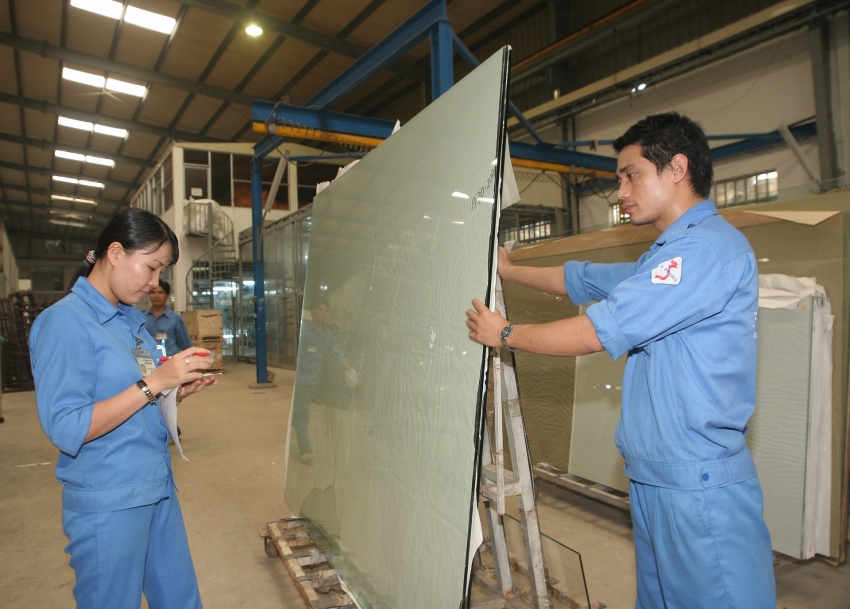Seasonal and COVID-19 woes strike at country’s revenue collection
A Ministry of Finance (MoF) report has stated that Vietnam’s total two-month budgetary revenue sat at VND276.7 trillion ($12 billion), up 9.3 per cent on-year, with budgetary revenue from domestic activities up 12.8 per cent on-year. However, revenue from export-import activities reduced by 15.7 per cent on-year to about VND48.2 trillion ($2.1 billion).
Meanwhile, the General Department of Vietnam Customs also reported last week that in the first two months of this year, customs agencies nationwide collected VND1.308 trillion ($56.87 million) daily from export-import activities, down from the VND1.458 trillion ($63.4 million) in the same period last year.
 |
| A reduction in domestic production due to COVID-19 has led to a two-month fall in state revenue collection |
The Lunar New Year holiday and especially the negative impacts of the COVID-19 pandemic were cited as the key reason, which has slashed enterprises’ activities in production, imports, and exports.
For example, Vietnam’s total export and import turnover with China has decelerated, with an on-year increase of only 2.4 per cent, far lower than 5 per cent reported in the same period last year.
In 2019, China held 15.75 per cent of Vietnam’s total goods export value and 29.7 per cent of import value.
In the first two months of 2020, the total import turnover of major contributors to budgetary revenue suffered large constrictions on-year, such as fossil coal (down 14.6 per cent), assorted cloth (10.5 per cent), assorted steel (18.5 per cent), complete built-up vehicles (57 per cent), assorted fibre (13 per cent), garment and footwear materials (11 per cent), and machinery and equipment (3.7 per cent).
“The reduction in the imports of these products has led to a decline in budgetary revenue,” stated the MoF report.
For instance, since early this year, Huynh Nhu Garments and Textiles JSC in the northern province of Bac Giang has not imported any containers of raw materials from China, which usually meet 70 per cent of the firm’s total material needs, with the remainder being purchased from Vietnam and other markets such as India, Southeast Asia, and South Korea.
“It is hard to boost imports from these markets as the current health crisis is causing a decline in garments and textile production in these nations,” said Pham Nhu Binh, sales manager of the company’s marketing division.
Elsewhere, the Vietnam Automobile Manufacturers Association last week reported that total automobile industry sales in the first two months of 2020 were down 27 per cent on-year, with passenger cars down 30 per cent and commercial vehicles by 17 per cent, while special-purpose vehicles went up 9 per cent.
The majority of components for the industry are imported as the local supporting industries are not fully in place yet.
A number of auto brands suffered from shrinking sales in February, such as Mercedes-Benz (100 per cent on-year), Honda (13 per cent on-year and 27 per cent on-month), THACO buses (26 per cent on-year and 74 per cent on-month), Peugeot (36 per cent on-year and 12 per cent on-month), and Ford (21 per cent on-year and 1 per cent on-month).
The General Statistics Office reported that in the first two months of 2020, the novel coronavirus had depressed the local production, with the index for industrial production only expanding by 6.2 per cent on-year, far lower than the 9.2 per cent on-year rise in the same period of last year.
The whole economy’s total export turnover hit $36.92 billion, up only 2.4 per cent on-year – 3.6 per cent lower than the climb in 2019’s corresponding period.
Meanwhile, total import turnover reached $37.1 billion, also up 2.4 per cent on-year – far lower than the 7.5 per cent on-year ascension last year.
What the stars mean:
★ Poor ★ ★ Promising ★★★ Good ★★★★ Very good ★★★★★ Exceptional
Related Contents
Latest News
More News
- Acecook Vietnam: 30 years of creating happiness (January 08, 2026 | 08:00)
- Sustainability a core value for DKSH’s vision (January 07, 2026 | 16:00)
- People encouraged to contribute and grow at AstraZeneca Vietnam (January 07, 2026 | 15:48)
- Dat Bike accelerates sustainable mobility (January 07, 2026 | 15:24)
- Innovation to support modern healthcare development (January 07, 2026 | 10:00)
- Six localities record double-digit growth as regional performance diverges in 2025 (January 06, 2026 | 18:00)
- E-commerce market undergoes transformation amid rising competition and regulation (January 06, 2026 | 17:54)
- Vietnam’s industrial output hits seven-year high in 2025 (January 06, 2026 | 17:47)
- GELEX’s credit rating outlook upgraded to 'Positive' by VIS Rating (January 06, 2026 | 16:49)
- Finance sector lays firm groundwork for 2026 after major reform (January 06, 2026 | 15:30)

 Tag:
Tag:



















 Mobile Version
Mobile Version